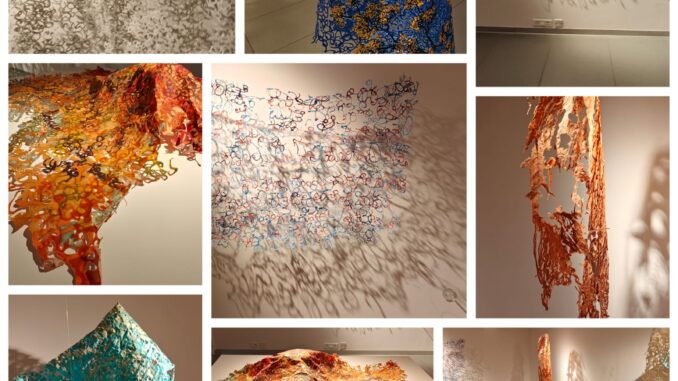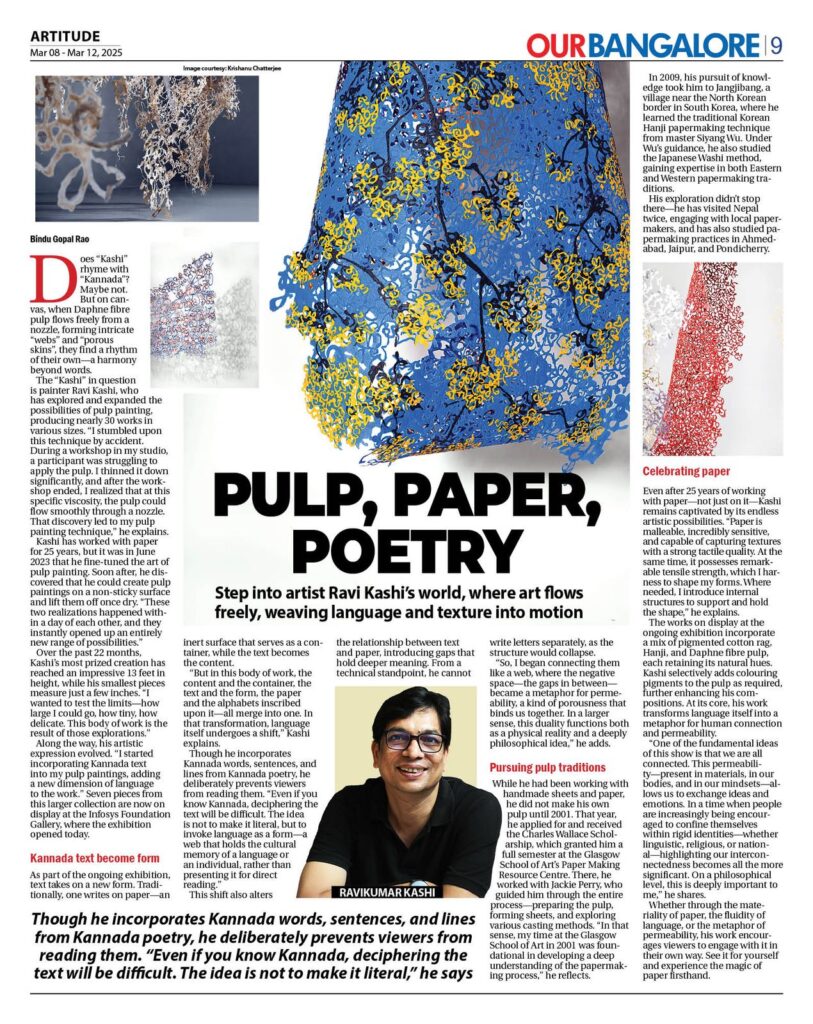
MAP’s brand new exhibition ‘We don’t end at our edges’ by artist, writer, and educator Bangalore based Ravikumar Kashi showcases his work with paper.
These are about the painting letters and Kannada alphabets. “I was born and brought up in Bangalore. Kannada is my mother tongue. I studied in Kannada medium till 7th standard. It’s almost till the age of 12. And then even after that, I read a lot of Kannada writers and people like Karanth, Kuvempu, Ananthamurthy. They all have shaped my worldview, my personality to some extent. And it was natural for me to think of Kannada. And then other than my art practice, I also write in Kannada. I write poetry in Kannada. I write on art and visual culture in Kannada. That is another aspect. Then I also do a lot of artist books where I use text and image together.
So, in that sense, it was natural for him to make some kind of text in the pulp painting process, writing in Kannada became a natural option. There was not even a second thought about trying English. “And of course, little later, after few months, I tried English. But the beauty of the Kannada alphabet, its organic, you know, character, and the form it has allowed me to develop the work in a certain direction and it has given that very strong organic quality to the whole body of work.”
In people’s mind the idea that paper is fragile is actually misplaced. Paper can survive. The earliest manuscripts of Buddhist, this one, which have survived is more than thousand years old. “And the papers which I make, which are done archivally in a proper method, will survive more than hundred years.”
The issue with paper is that has to be protected from weather, especially if it’s a very humid weather like Bombay or Calcutta. It tends to absorb the moisture and then all the fungus grows. There are some varnishes which can be applied which doesn’t take away the quality of paper and still protects the paper from the weather. But it’s still not an option to be the paper which we put out in the open for very long. So that is a very big issue. The works have to be put up in boxes and covered for a long-lasting life. “The other challenge is when I exhibit the works, people like the work. They are excited by looking at it and all that. But the collectors have still not taken to collecting works in paper in a very big way. I am sure that, you know, that will change very quick, very quickly. The other issue with paper is it’s a breathing material. It responds to weather. So, it cannot be kept outside like a stone sculpture or a metal sculpture.”
“The pulp which I use, cotton rag has a certain natural color. Hanji, which is made from mulberry, has a certain color. Daphné is a shrub which grows in the Tibet and Nepal area. All of them have their own natural colors. Sometimes I use the natural color of the fiber. I don’t add any pigment to it. But sometimes when I need to change the color of the of the pulp, sometimes I do the dyeing in large batches, and then whatever little amount of pulp I need, I grind it and use. And sometimes I also use acrylic colors, which are artist’s quality acrylic colors. I mix them with the pulp, and then I use it in my work. That’s how the pulp gets a certain coloring that can be seen in my work.” He has used language here because language communicates and connects people. And it gives a certain kind of identity.
Read the full story that first appeared in Our Bangalore dated March 8-14, 2025 here:


Leave a Reply